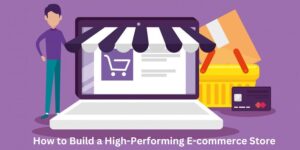O2O Commerce: The retail trend enterprises cannot miss!
06/09/2023
1.66k
Table of Contents
The retail world is undergoing rapid changes, with COVID-19 playing a significant role in accelerating these shifts. One trend that has emerged as a pivotal game-changer for enterprises is O2O Commerce, which encompasses both Online to Offline Commerce (O2O) and Offline to Online Commerce (O2O). It’s crucial for business owners to grasp the essence of this trend. In this article, we will delve into the world of O2O Commerce, exploring its nuances, highlighting its advantages, and providing a roadmap for its effective implementation.

Understanding O2O Commerce
What is O2O Commerce?
Online to Offline (O2O) Commerce refers to the process of enticing online customers to engage with a physical business or location. Imagine a customer browsing an online store’s website, finding a product they like, and then visiting the physical store to make the purchase. This is a classic example of O2O Commerce. Conversely, Offline to Online (O2O) Commerce involves offline customers transitioning to the online world. For instance, a traditional store offering online ordering and delivery services.
Historical Context of O2O Commerce
To understand the significance of this unprecedented retail trend, we must look at its historical evolution. Traditional retail has long been the cornerstone of commerce. Shoppers would visit physical stores, interact with products, and make their purchases in person. Then came the rise of e-commerce, enabling consumers to shop from the comfort of their homes. These two worlds seemed distinct, but the convergence of online and offline commerce was inevitable.
This convergence is exemplified by retail giants like Amazon, which started as an online bookstore and later ventured into physical stores with Amazon Go. Such examples highlight how O2O Commerce is rewriting the rules of retail.
What are the benefits of O2O Commerce?
Enhanced Customer Experience
One of the primary advantages of O2O Commerce is the ability to provide customers with a seamless and personalized shopping experience. By leveraging data from both online and offline channels, businesses can tailor their offerings to individual preferences. For instance, a customer browsing online might receive location-based notifications about special in-store discounts or exclusive promotions, encouraging them to visit the physical store.
According to a recent survey, 63% of consumers are more likely to make a purchase from a retailer that offers personalized recommendations based on their previous shopping behavior. This statistic underscores the importance of personalization in achieving omnichannel.
Boosting Sales and Revenue
O2O Commerce is a powerful strategy for boosting sales and revenue. It allows businesses to harness the strengths of both online and offline channels. For instance, a restaurant can use its website to attract online orders and reservations, while also offering in-store dining experiences. This dual approach caters to a broader customer base and maximizes revenue potential.
Moreover, data-driven decision making plays a pivotal role. By analyzing customer data across channels, businesses can identify trends, optimize pricing strategies, and allocate resources more effectively. This data-driven approach has led to a 10% increase in sales for businesses implementing O2O Commerce, according to a recent industry report.

Implementing O2O Commerce Strategies
Steps for E-commerce Business Owners
If you’re an e-commerce business owner looking to embrace O2O Commerce, here are some essential steps:
- Integrating Online and Offline Inventory: Ensure that your online store and physical locations share real-time inventory information. This prevents customer frustration due to out-of-stock items and offers a consistent shopping experience.
- Leveraging Location-Based Marketing: Use geolocation data to send targeted promotions and alerts to customers when they are near your physical store. For instance, a clothing brand can notify shoppers about a flash sale when they are within a certain radius of a store location.
Steps for Traditional Retailers
Traditional retailers can also benefit from this new type of E-commerce by taking the following steps:
- Establishing an Online Presence: Create an e-commerce website or partner with online marketplaces to expand your reach. Ensure your online store mirrors the quality and professionalism of your physical store.
- Utilizing E-commerce Platforms: Embrace e-commerce platforms that offer features like online ordering, home delivery, and curbside pickup. These options cater to the evolving preferences of customers who prefer online convenience.
Future Trends of Seamless E-commerce
The Future of Online-to-Offline (and vice versa) Commerce
As technology continues to advance, the future of online to offline commerce looks promising. Emerging technologies like Augmented Reality (AR) and Artificial Intelligence (AI) are reshaping the retail experience. AR, for instance, enables customers to visualize products in their own spaces before making a purchase decision, bridging the gap between online and offline product exploration.
Why O2O Commerce Is a Must for Enterprises
In conclusion, this is not just a trend; it’s a strategic imperative for enterprises in the digital age. It allows businesses to stay competitive by meeting the ever-changing expectations of modern consumers. The ability to seamlessly integrate online and offline channels, enhance the customer experience, and boost sales and revenue makes O2O Commerce a game-changer.
Statistics reveal that businesses that successfully implement O2O Commerce strategies experience a 15% increase in customer retention and a 12% increase in overall revenue. With such compelling numbers, it’s clear that this retail trend is not something enterprises can afford to miss. Embrace it today, and future-proof your business for tomorrow’s retail landscape.
Read more about our latest case study in building custom software application to help our client achieve offline-to-online retail.
Related Blog





















